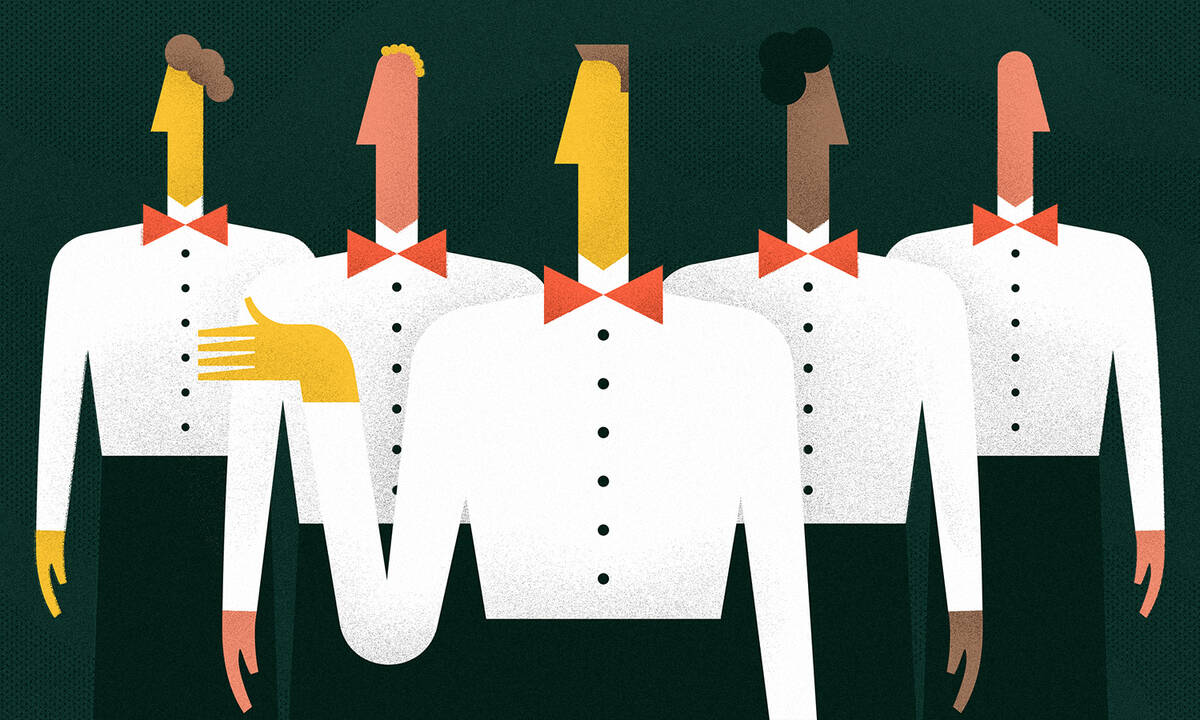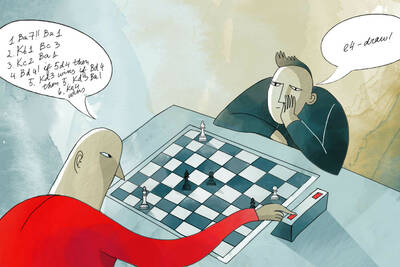Marketing Sep 10, 2019
First Impressions Matter for Groups, Too
Labeling something or someone as “first” can have a dramatic effect on our perceptions of those who follow.

Riley Mann
First impressions are powerful. We all remember being instantly drawn to or put off by someone we’ve just met. And, new research suggests, these first impressions may influence not just how we evaluate individuals, but also how we judge entire groups.
Maferima Touré-Tillery, an associate professor of marketing at the Kellogg School, and colleagues found that when we are told someone is the first of a group, that person’s performance affects how well or badly we think the rest of the group will do—even when we know the sequence is random.
For instance, imagine you see a video of a skateboarder landing an especially impressive trick. If she’s the first of a group of competitors, you’ll probably assume the rest of the group is equally skilled. But if you know this skater standout was the third to compete, it’s less likely to influence your impression of the rest of the group.
Touré-Tillery and her coauthors—Janina Steinmetz of Cass Business School and Ayelet Fishbach of the University of Chicago—dub this effect the “first-member heuristic” and find that it crops up in all sorts of situations, from athletics to immigration.
“Labeling someone or something ‘first’ can have a huge influence not only on your judgment of them, but on your judgment of others that are associated with them,” Touré-Tillery says. “Just putting the label ‘one’ on something or someone can make a big difference.”
Why do firsts have such power? Touré-Tillery and her colleagues think it comes down to overgeneralization. There are lots of times when what comes first really is meaningful. After all, the first employee at a company, for example, plays a big role in determining the company’s culture, and the first member of a club is likely to attract other members with similar interests.
“This very rational perspective translates into these less rational contexts,” Touré-Tillery explains. “People still assume that the first member of the group is going to be diagnostic, representative, or informative for learning about the rest of the group.”
First Principles
Touré-Tillery and her colleagues knew from other research that labeling things “first” or “one” can influence how people assess them, even when the sequence or number is assigned arbitrarily.
For instance, one 2014 study found, if you hear that it will be rainy in Paris on Monday, the first day of a fictional vacation, you’ll predict worse weather on Tuesday than you will if you’re told that the rainy Monday is the last day of your vacation.
“Just putting the label ‘one’ on something or someone can make a big difference.”
They suspected the effect might extend to people’s assessments of entire groups of people or things, too.
So they designed an experiment that would test the basic principle, using 300 participants recruited online. These participants read a narrative about seven college gymnasts performing a floor routine. The order in which the athletes performed was determined randomly—by drawing a number out of a jar.
The participants read about one particular gymnast, Emma, who gave an outstanding performance. Then, they were divided into three groups: some were told Emma performed first, others that she performed fourth, and the rest that she performed last. All participants then rated from one to nine how well they thought the other eight gymnasts would do on their floor routines.
It turned out that Emma’s position in the sequence—first, middle, or last—affected participants’ ratings of the other gymnasts. Among the participants who heard Emma was the first performer, expected ratings of the other gymnasts’ performance were higher (an average of 6.98 out of nine) than among participants who heard she was fourth (6.46) or last (6.45).
Flipping from Gymnasts to Scientists
Of course, judging gymnasts is a relatively low-stakes endeavor (unless you’re Kerri Strug). “We wanted to find something that could show the potentially consequential effect of this bias in judgment,” Touré-Tillery explains.
Would the first-member heuristic persist, the researchers wondered, when the real-world effects were more serious?
To find out, they recruited 210 online participants and asked them to read a narrative about five foreign cancer researchers who had come to the United States on H-1B visas. The participants were told that the scientists had received their visas at slightly different times as a result of arbitrary bureaucratic procedures.
Participants read about one scientist, Milom, who had made a serious mistake that compromised the work of his lab. Some participants were told Milom was the first of the scientists to arrive in the U.S., while others were told he was either the third or the last of the group. Then, the participants rated from one to nine how well they thought the other four scientists would do on their work.
Participants again evaluated the rest of group slightly less favorably when they were told the bad apple was the first to arrive (an average of 6.17 out of nine), as compared to third (7.11) or last (6.98).
And, more consequentially, the order affected participants’ answers when asked whether they thought the other scientists’ visas should be extended.
When participants heard that careless Milom was the first to arrive in the U.S., they rated their willingness to renew the other scientists’ visas an average of 6.66 out of nine—a rating that increased to 7.38 if they heard Milom was third, and 7.27 if he was the last.
It didn’t matter that the timing of Milom’s arrival in the country was determined randomly. “The sequence, no matter how arbitrary, is going to have some influence on your judgment,” Touré-Tillery says. “And this happens without you knowing that it’s having that kind of influence on your judgment.”
Group Dynamics and the First-Member Heuristic
The researchers were struck by the power of the first-member heuristic. “It’s a very strong effect statistically,” she says, and one that seems to endure across contexts. So the researchers wanted to understand if there were any circumstances in which people would stop relying on this mental shortcut.
They set out to test their hypothesis that telling participants that the individuals they were evaluating were not part of
a single group would make a difference.
The researchers recruited 300 college students, who read about five racehorses competing in separate races. Some of the students were told the horses were trained by a team of trainers, while the rest were told the horses’ trainers had never met.
Next, the students heard about the poor performance of a horse called Flying Mane, whose race was either first, third, or last. Then, the students were asked to rate from one to nine how well they thought the other four horses did in their races.
Just as the researchers expected, the first-member heuristic kicked in among students who had been told that the horses’ trainers worked as a team. These participants predicted worse performances for the other horses when Flying Mane went first, but not when he raced third or last.
But among participants who didn’t view the horses as a group, the effect vanished.
Last Thought on First Members
For businesses, the applications of the first-member heuristic are clear: make sure that whatever you call “first” is the best, Touré-Tillery says. Put your best employee on cashier number one, and your tastiest menu items on Combo Meal #1. That’s because judgments about those individuals and items likely set the tone for your customer’s expectations about their experience with your product or service.
In other scenarios, where the consequences of our judgements are more significant, Touré-Tillery thinks it’s important to be aware of the first-member bias so we can actively work to resist it.
For instance, she often has her students give team presentations; now, she knows that the performance of the first team might alter how she views the others. “This is something that we want to be mindful of, that thinking of someone as the first member of the group can influence what you then expect the rest of the group to do. And expectations are often self-fulfilling.”


